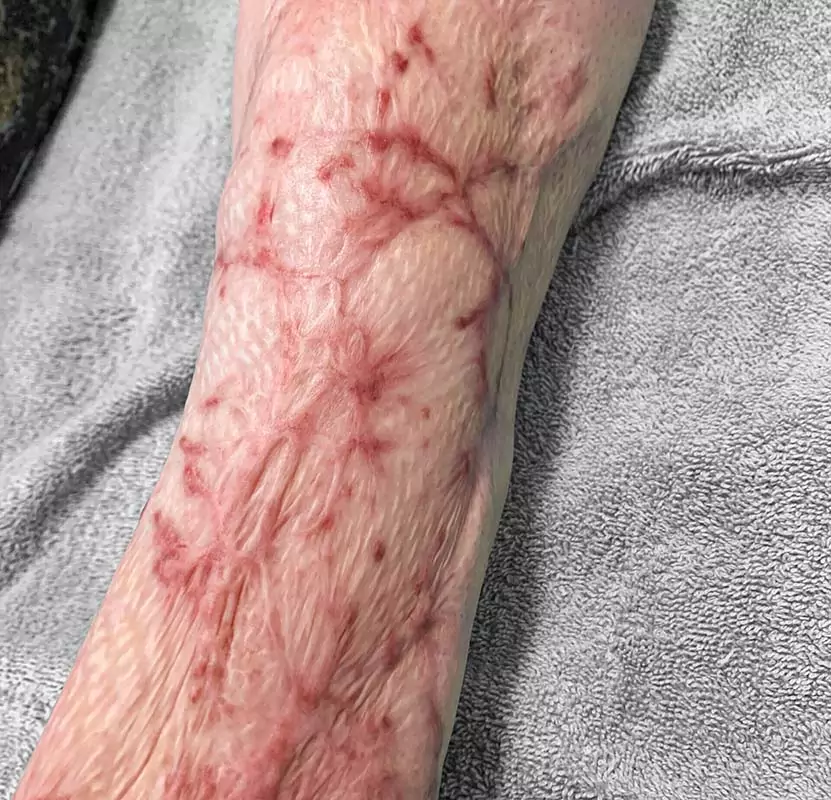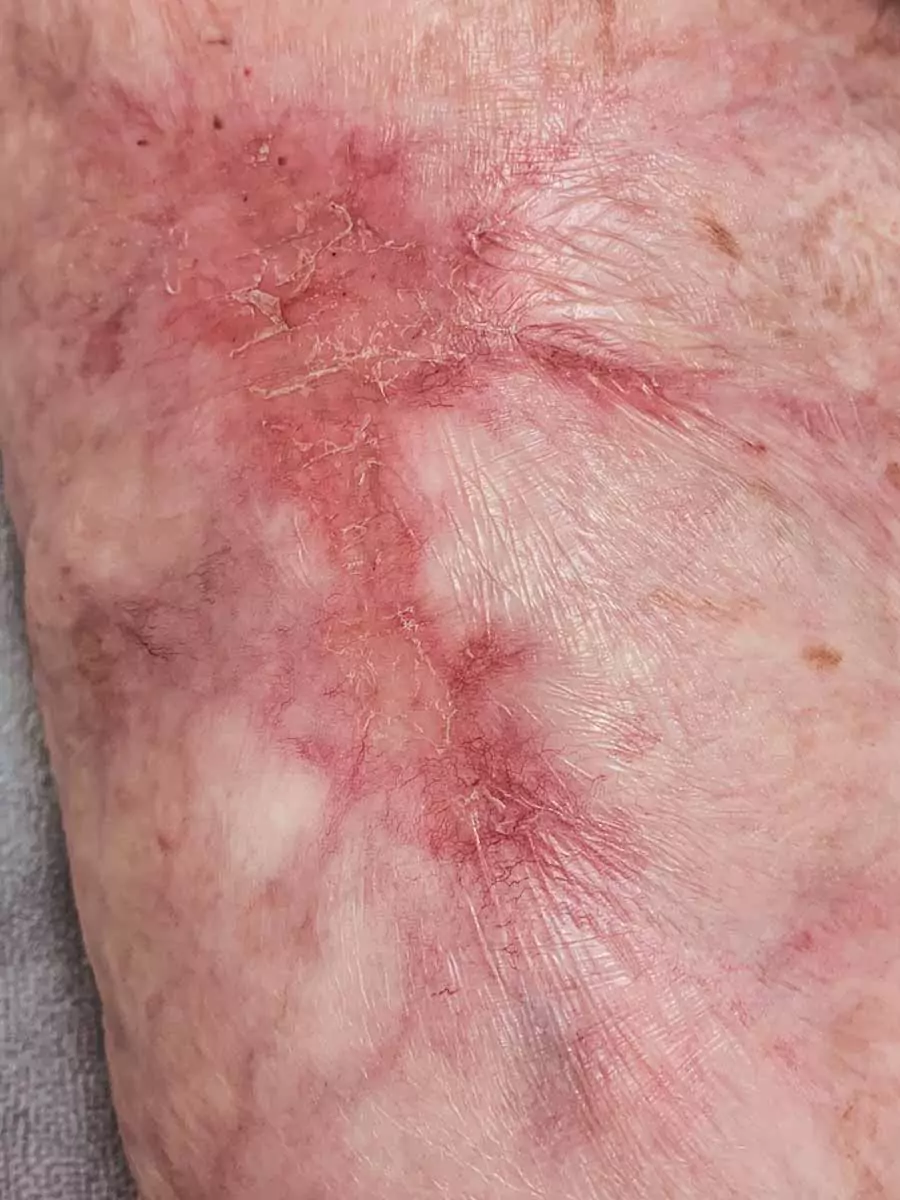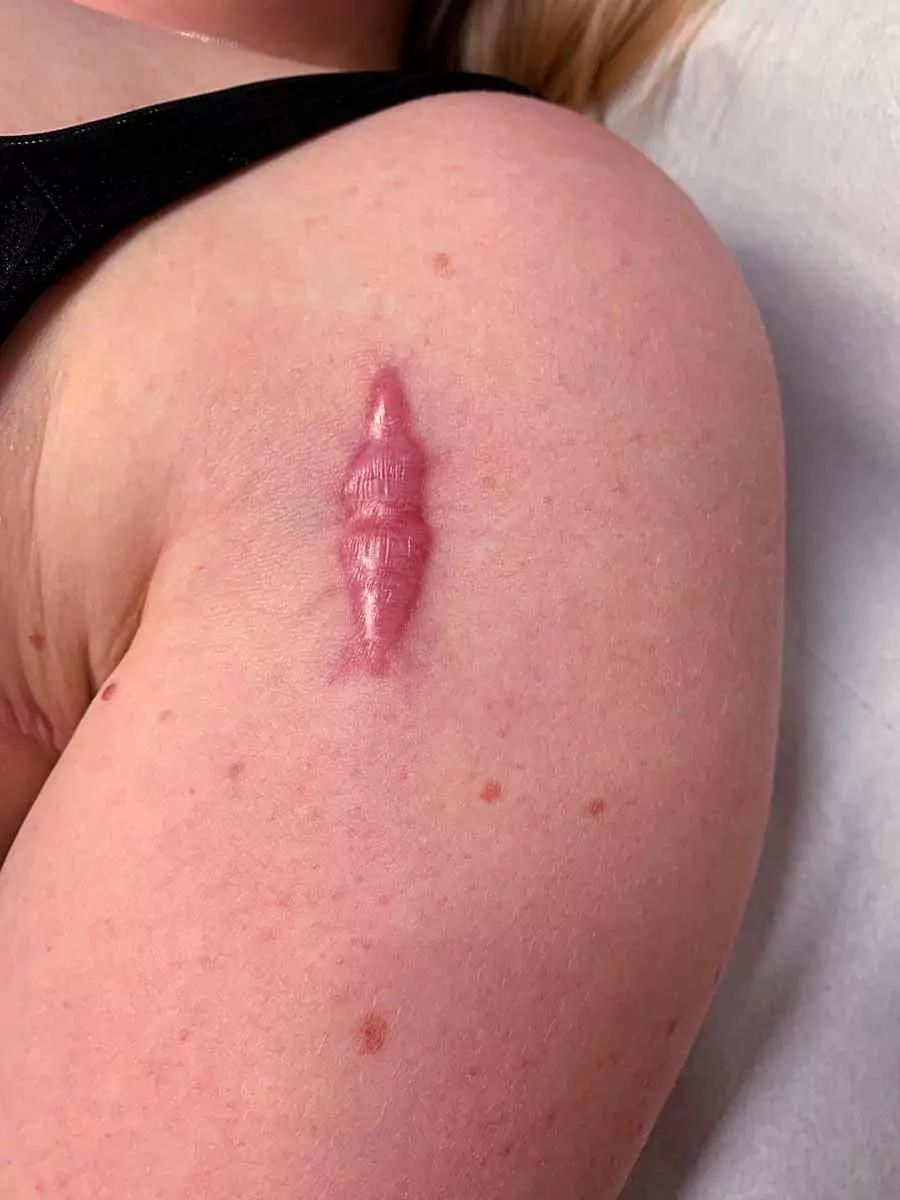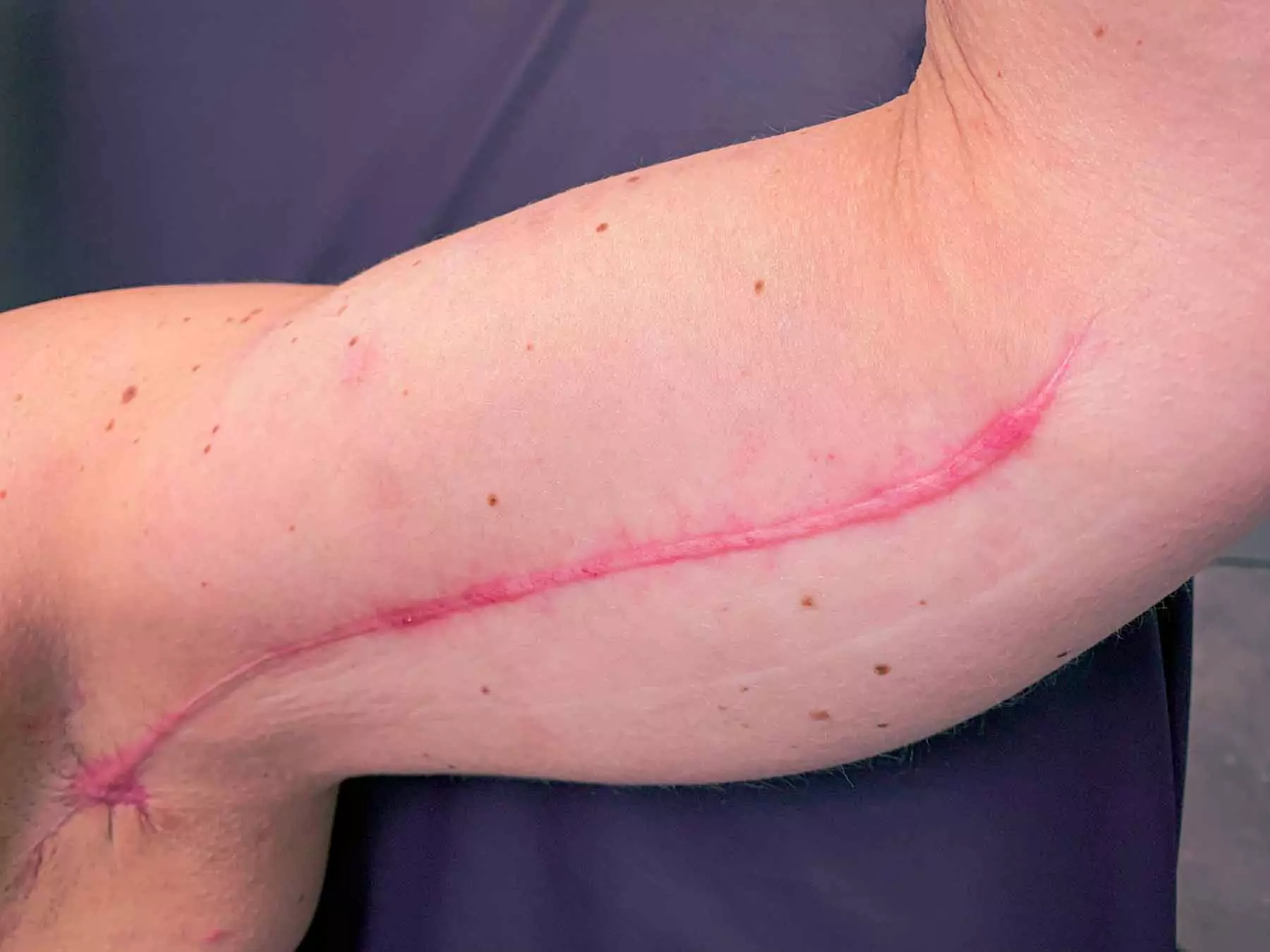A Red Scar – What Does It Mean?
After an injury, such as surgery, a fall, a scrape, or a burn, you often notice redness in the affected area right away. This redness is a natural reaction from your body and doesn’t automatically mean there’s an infection. What’s happening is that the blood vessels in your skin widen — a process called vasodilation — allowing more blood to flow to the injured area. This extra blood flow makes the area look red and feel warm. The purpose of this is to support the healing process: the extra blood brings oxygen and nutrients that are needed to repair the tissue. Redness is also often linked with itching.
Over time, the appearance of an abnormal scar changes. About seven months after the injury, most scars usually become less red and start to fade. However, in many people, the redness can stay visible for much longer, sometimes even more than a year after the injury. This still doesn’t necessarily mean the scar is infected. At this stage, the redness is mainly due to the presence of many new, tiny blood vessels in the scar tissue. These vessels are very active and allow oxygen-rich blood to flow easily, which gives the scar its red appearance.
The degree of redness in a scar can also indicate which stage of healing it’s in. A very bright red color, for example, can show that the scar is still actively healing and might benefit from further care or treatment. That’s why it’s important to keep a close eye on scars and, if you’re unsure, ask a doctor or scar specialist for advice.



















